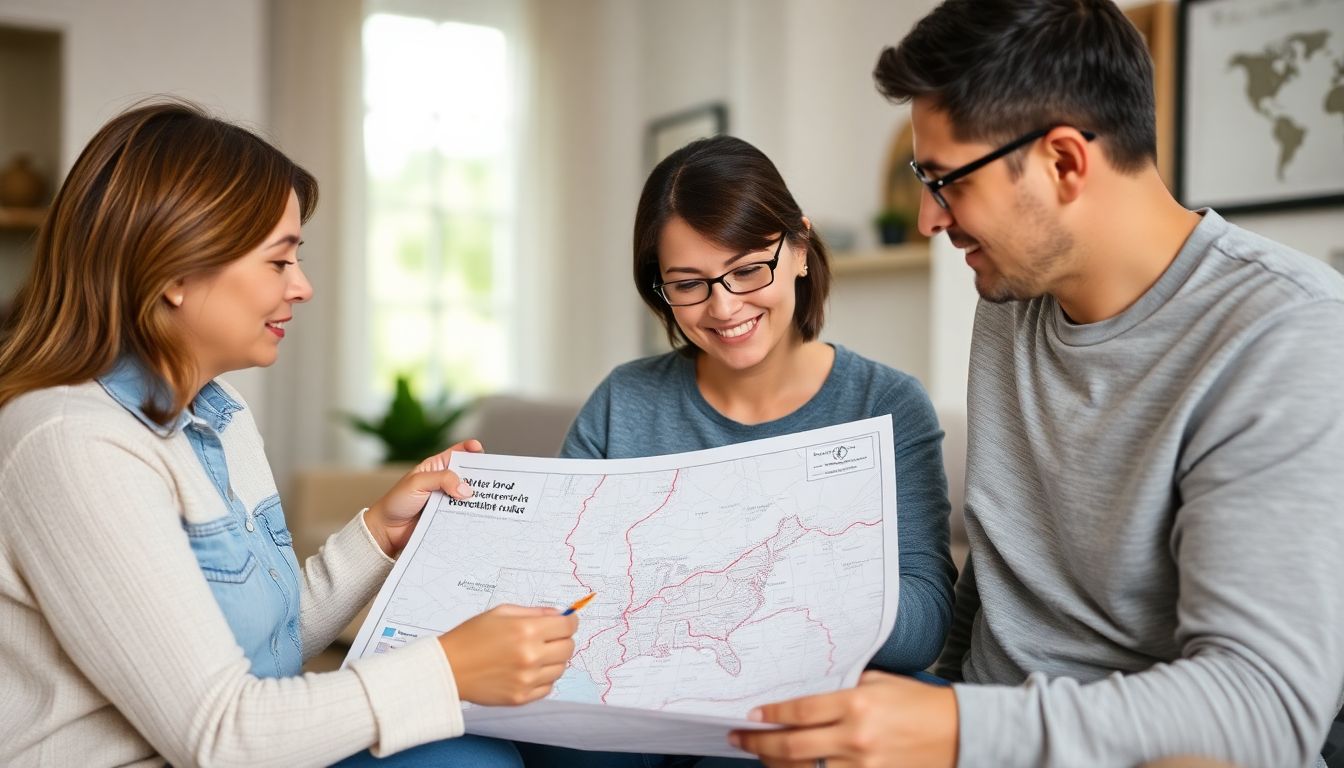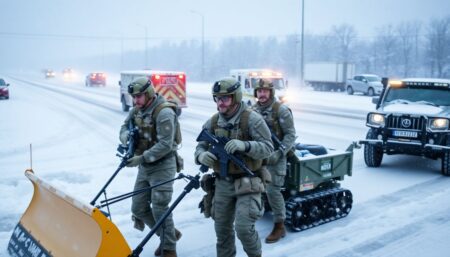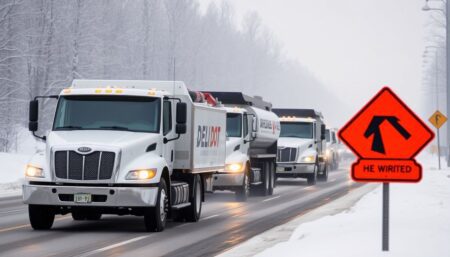Have you ever wondered what you would do if a sudden disaster struck, forcing you and your family to evacuate your home at a moment’s notice? The reality is that emergencies can happen anytime, anywhere, and it’s crucial to be prepared. According to the Federal Emergency Management Agency (FEMA), only 39% of American households have an emergency plan in place. This alarming statistic underscores the importance of creating a foolproof bug-out plan for your family. But where do you start?
Creating an evacuation strategy might seem daunting, but it’s a lot simpler than you think. In this comprehensive guide, we’ll walk you through the process of developing a robust bug-out plan that will ensure the safety and well-being of you and your loved ones in the event of an emergency. Whether you’re preparing for natural disasters like hurricanes, wildfires, or earthquakes, or man-made crises such as chemical spills or power outages, this article is designed to equip you with the knowledge and tools necessary to face any situation head-on.
By the end of this article, you’ll be able to:
- Understand the importance of having a bug-out plan and how it can save lives.
- Identify potential threats in your area and assess your family’s unique needs.
- Create a personalized evacuation strategy that caters to your family’s specific requirements.
- Assemble an emergency supply kit that will see you through the initial 72 hours of a crisis.
- Establish a communication plan to keep your family connected and informed during an emergency.
- Practice and maintain your bug-out plan to ensure its effectiveness.
So, are you ready to take the first step towards ensuring your family’s safety and peace of mind? Let’s dive in and create a foolproof bug-out plan that will give you the confidence to face any challenge that comes your way.
Mastering Emergency Preparedness: Crafting a Robust Bug-Out Plan for Your Family
In the dynamic tapestry of life, it’s crucial to weave in threads of preparedness, especially when it comes to safeguarding our loved ones. A well-crafted bug-out plan, an integral part of emergency preparedness, is not just about having a ‘what if’ scenario, but a ‘when’ and ‘how’ strategy. Imagine this: the ground trembles, a storm rages, or an unexpected event unfolds. Your family looks to you, eyes wide with anticipation. You’re not just their shelter in the storm, but the lighthouse guiding them to safety. A robust bug-out plan is your beacon, a roadmap etched with clear, concise instructions. It’s about knowing your evacuation routes like the back of your hand, having an emergency supply kit that’s as comprehensive as it is compact, and ensuring every family member, from the youngest to the oldest, knows their role in the grand scheme of things. It’s about practicing drills until they become second nature, and communicating with neighbors to create a community of support. It’s about turning potential chaos into a well-oiled machine, ready to spring into action at a moment’s notice. So, let’s not wait for the storm to brew. Let’s start crafting that bug-out plan today, because preparedness is not just about being ready, it’s about being resilient.

Understanding the Need for a Bug-Out Plan
In the face of an unpredictable world, the importance of having a well-thought-out bug-out plan cannot be overstated. A bug-out plan, essentially, is a strategy designed to ensure the safety and survival of you and your family in the event of an emergency that requires immediate evacuation. This could range from natural disasters like hurricanes, wildfires, or earthquakes, to man-made crises such as chemical spills, nuclear accidents, or even civil unrest.
Imagine the chaos and fear that can ensue when disaster strikes. Now, imagine having a clear, step-by-step plan that guides you and your family through the evacuation process, ensuring everyone’s safety and minimizing panic. This is the peace of mind that a bug-out plan provides. It’s like having a roadmap to safety, a beacon of calm in the storm.
But the benefits of a bug-out plan extend beyond the immediate evacuation. A comprehensive plan includes a meeting point for your family, an emergency communication strategy, and a list of essential items to bring along. This ensures that even if you’re separated during the evacuation, you have a way to reconnect and regroup. It also guarantees that you have the necessary supplies to sustain your family until you can reach safety.
Moreover, a bug-out plan isn’t a one-size-fits-all solution. It should be tailored to your family’s specific needs, location, and potential threats. This means considering factors like your family’s health conditions, the types of disasters common to your area, and the best evacuation routes for your situation.
In essence, having a bug-out plan is about being proactive rather than reactive. It’s about taking control of a situation that, by its very nature, is out of control. It’s about ensuring that when the unexpected happens, you’re not just surviving, you’re thriving. So, don’t wait for disaster to strike. Start planning your bug-out strategy today and give your family the gift of safety and peace of mind.

Assembling Your Bug-Out Team
Assembling a bug-out team isn’t just about gathering supplies; it’s about rallying your family, ensuring everyone knows their role, and fostering a sense of unity and preparedness. Involving the entire family in the planning process is not only beneficial for emergency preparedness but also serves as an excellent opportunity to educate children about the importance of being prepared.
Start by scheduling a family meeting to discuss the importance of emergency preparedness. Use age-appropriate language to explain what an emergency is and why it’s crucial to be prepared. For younger children, you might use a story or a game to illustrate the concept. For older children and teens, you can delve into more detailed explanations and discuss real-life scenarios.
Next, assign roles and responsibilities to each family member. This could include tasks like being the ‘first aider’, the ‘communication specialist’ who knows how to use the emergency radio, or the ‘supplies manager’ who knows where all the emergency supplies are stored. For children, their roles could be as simple as ‘comforter’ to help calm others, or ‘pet wrangler’ if you have pets. Make sure these roles are age-appropriate and challenging enough to boost their confidence.
Communicating with children about emergency preparedness can be a delicate task. It’s important to strike a balance between being informative and being reassuring. Explain that emergencies can happen, but that having a plan makes them less scary. Use ‘what if’ scenarios to practice different situations and discuss how each family member would respond. Make sure to emphasize that the family will stick together and help each other through any challenges.
Lastly, practice your emergency drills regularly. This will help everyone become familiar with their roles and responsibilities, and it will also serve as a bonding experience. Remember, the goal is not just to be prepared, but to be prepared together as a family.
Involving the entire family in the planning process might seem like a daunting task, but it’s a rewarding one. It not only ensures that everyone knows their role in an emergency but also fosters a sense of unity, responsibility, and resilience within the family.

Choosing the Right Bug-Out Location
Choosing the right bug-out location is a critical step in your family’s emergency preparedness plan. This safe haven, outside of your immediate area, serves as a meeting point where you can reunite with loved ones and assess the situation before deciding on your next course of action. The location you choose can significantly impact your safety, comfort, and ability to recover from a disaster.
The first factor to consider is distance. The ideal bug-out location should be far enough from your home to provide safety from potential hazards, yet close enough to reach within a reasonable time frame. A general rule of thumb is to aim for a location that’s 20-50 miles away from your immediate area, depending on the nature of the disaster and local geography.
Accessibility is another crucial factor. The location should be easily accessible by car, on foot, or by other means of transportation. Consider the routes you’ll take to get there and ensure they’re not prone to flooding, blocked by fallen trees, or likely to be closed due to other disasters. It’s also a good idea to have multiple routes in mind in case one is inaccessible.
Lastly, consider the resources available at your chosen location. This includes not just food and water, but also shelter, medical supplies, and communication tools. If possible, choose a location that has a reliable power source, such as a generator or solar panels, and access to clean water. Additionally, consider the local community and their willingness to help in times of crisis.
To summarize, here are the key factors to consider when choosing a bug-out location:
- Distance: Far enough for safety, close enough for accessibility
- Accessibility: Easy to reach by car, on foot, or other means
- Resources: Food, water, shelter, medical supplies, and communication tools

Packing Your Bug-Out Bag: Essentials and Extras
When it comes to packing your bug-out bag, the goal is simple yet crucial: to ensure you have everything you need to survive and thrive in an emergency situation. The first step is to include the essentials that every family should have. Water is at the top of the list, with a general guideline of one gallon per person per day. Store it in durable, leak-proof containers and make sure to rotate your supply every six months. Food is another necessity, with non-perishable items like canned goods, energy bars, and dried fruits being ideal. Remember to consider any dietary restrictions or allergies in your family.
The next category is first-aid supplies. A well-stocked first-aid kit can mean the difference between a minor inconvenience and a major crisis. Include bandages, antiseptic wipes, pain relievers, tweezers, and any prescription medications your family might need. Don’t forget to check the expiration dates regularly and restock as needed.
Important documents are often overlooked but are just as crucial. These include identification cards, insurance policies, birth certificates, and any other documents that prove your identity and rights. Keep them in a waterproof container or bag.
Communication devices are vital to stay connected and informed during an emergency. A portable, crank, or solar-powered radio can provide updates on the situation. A fully charged cell phone with a backup power bank is also essential. Consider including a whistle to signal for help if necessary.
However, the contents of your bug-out bag should not be one-size-fits-all. Consider your family’s unique needs. If you have young children, include comfort items like a favorite stuffed animal or blanket. If you have pets, pack supplies for them as well. If you live in an area prone to specific disasters, like hurricanes or earthquakes, research what additional items you should include. For example, if you live in a flood-prone area, consider including a small boat or life jackets.
Lastly, don’t forget to consider the specific emergency situation. If you need to evacuate, you might want to include a map and compass or a GPS device. If you plan to stay at home, consider including tools to board up windows or repair damage. The key is to be prepared for any situation that might arise.

Developing an Evacuation Strategy
Developing an evacuation strategy is a crucial aspect of emergency preparedness that often goes overlooked. When planning your evacuation routes, it’s essential to consider multiple paths to ensure your safety and that of your loved ones. Start by mapping out your home and neighborhood, identifying potential hazards, and determining the quickest routes to safety.
First, assess your home’s layout and identify the best exit points. These could be doors, windows, or even balconies, depending on your home’s structure. Ensure that all exit points are easily accessible and not blocked by furniture or other obstacles.
Next, consider your neighborhood’s layout and traffic patterns. Identify the main roads and alternative routes that you can take in case of an emergency. Consider factors like road conditions, traffic congestion, and any potential hazards such as bridges, tunnels, or low-lying areas prone to flooding.
It’s also crucial to consider alternative transportation methods. If you don’t have a car, plan for public transportation, bicycles, or even walking routes. If you have a disability or mobility issues, ensure that your evacuation plan caters to your specific needs.
Once you’ve identified your evacuation routes, it’s time to practice them regularly. This will help you become familiar with the routes and ensure that they are safe and accessible. Here are some steps to guide you through this process:
- Choose a day and time for your practice evacuation, preferably when traffic conditions are similar to what you might expect during an actual emergency.
- Gather your family or household members and assign each person a role, such as gathering important documents, pets, or medications.
- Practice your evacuation routes, timing how long it takes to reach your designated meeting point or safe location.
- Discuss any challenges or obstacles you encountered during the practice evacuation and adjust your plan accordingly.
Regular practice will not only help you become more familiar with your evacuation routes but also ensure that your plan is up-to-date and relevant to your current situation. It’s also an excellent opportunity to teach your children about emergency preparedness and the importance of having an evacuation plan.
In conclusion, developing an evacuation strategy is a critical component of emergency preparedness. By planning multiple evacuation routes, considering various factors, and practicing your plan regularly, you can ensure the safety and well-being of you and your loved ones in the event of an emergency.

Staying Informed and Connected
Staying informed and connected during emergencies is not just a convenience, but a crucial aspect of ensuring your safety and that of your loved ones. In today’s digital age, there are numerous ways to stay updated about emergency situations and evacuation orders. Let’s explore some of these methods and the importance of having a family communication plan.
Local News and Weather Alerts:
Traditional media like local TV, radio, and newspapers are still reliable sources of information. They often provide real-time updates about emergencies and evacuation orders. Similarly, weather alert services can notify you of severe weather conditions that may require evacuation. Many of these services offer SMS alerts, ensuring you’re informed even if you’re without power.
Emergency Management Apps:
Technology has brought us a plethora of apps designed to keep us informed during emergencies. Apps like FEMA, NOAA Weather Radio, and Red Cross Emergency provide real-time updates, safety tips, and even send alerts based on your location. Some apps also allow you to monitor conditions in other locations, useful if you have family or friends in different areas.
Family Communication Plan:
- While these methods help you stay informed, it’s equally important to have a plan for communicating with your family. Here’s a simple three-step plan:
Identify an Out-of-Town Contact:
- Choose someone who can act as a central point of contact for your family during an emergency. This person can help coordinate information and communicate with family members who may be separated.
Establish Meeting Points:
- Identify two meeting points
- one right outside your home and another outside your neighborhood, in case you can’t return home.
Communicate Regularly:
Regularly update your family on your status and encourage everyone to do the same. Use text messages, social media, or email, as these are often more reliable than phone calls during emergencies.
Remember, staying informed and connected is not a one-time task. It requires regular updates, checking in with loved ones, and being prepared to adapt your plans as the situation changes. So, stay informed, stay connected, and stay safe!

Pets and Bug-Out Plans: Don’t Forget Your Furry Family Members
When disaster strikes, our first thoughts often go to our human loved ones, but it’s crucial not to forget our furry family members. Pets are part of our families, and they deserve to be included in our bug-out plans. Having a well-thought-out plan for your pets can make a significant difference in their safety and well-being during an emergency.
Preparing pet supplies is the first step in ensuring your pet’s safety. This includes having enough food, water, bowls, litter, and any necessary medications for at least a week. Don’t forget to pack a favorite toy or two to help keep your pet calm and comfortable in a stressful situation. It’s also a good idea to have a current photo of your pet in case they get lost during the chaos.
Next, it’s essential to research pet-friendly shelters in your area. Not all shelters allow pets, so it’s crucial to plan ahead. Some hotels also allow pets, but policies can vary, so it’s best to call ahead and confirm. Having a list of pet-friendly hotels, friends, or family members who would be willing to take you and your pet in can be a lifesaver.
When it comes to ensuring your pet’s safety during an emergency, there are a few key steps to keep in mind. First, make sure your pet has proper identification, such as a microchip or ID tags. This can help ensure they are returned to you if they get lost. Second, keep your pet on a leash or in a carrier when you’re evacuating to prevent them from running off. Lastly, be prepared to improvise. Emergencies can throw a wrench in even the best-laid plans, so it’s important to be flexible and adaptable.
Including your pets in your bug-out plan might seem like a small detail, but it can make a world of difference in their lives and yours. After all, they’re not just pets; they’re family. So, let’s make sure our furry friends are just as prepared as we are for whatever life throws our way.

Reviewing and Updating Your Bug-Out Plan
Regularly reviewing and updating your bug-out plan is not just a good idea, it’s a crucial step in ensuring your family’s safety and preparedness. Life is dynamic, and so are the potential threats and challenges we face. A bug-out plan that was perfect a year ago might not be as effective today. That’s why it’s essential to set aside time every few months to review, update, and adapt your plan.
Start by gathering everyone involved in the plan
- your family members, roommates, or close friends. This is not just an exercise for the ‘prepper’ in the family; everyone should have a say in the plan. After all, everyone’s input is valuable, and everyone’s life is at stake.
Begin with a thorough review of your current plan. Check the routes you’ve mapped out. Are they still the safest and most practical? Have there been any road closures or new constructions that might affect your escape route?
Next, review your meeting points. Are they still accessible and safe? Have any of your family members moved or changed jobs, which might affect their ability to reach the meeting point?
Then, discuss your supplies. Are they enough? Have any of them expired or been used? Do you need to add or remove anything based on your family’s current needs and circumstances?
Don’t forget to consider changes in your family dynamics. Have there been any new additions, like a pet or a baby? Do you need to adjust your plan to accommodate them?
Lastly, consider potential new threats. Have there been any natural disasters or civil unrest in your area? Have you discussed and planned for these scenarios?
Incorporating feedback from everyone is key. Use a whiteboard or a shared document to jot down everyone’s suggestions and concerns. After the discussion, take some time to consolidate the feedback and update your plan accordingly.
Remember, the goal is not to have a perfect plan, but a plan that works for your family. It’s better to have a plan that’s slightly imperfect but adaptable than a perfect plan that’s rigid and unworkable. So, don’t hesitate to make changes, no matter how small. Your family’s safety depends on it.
FAQ
What is a Bug-Out Plan and Why is it Important?
How Do I Determine When to Bug Out?
What Should I Include in My Bug-Out Bag?
- Water (one gallon per person per day)
- Non-perishable food (at least a three-day supply)
- Manual can opener
- Flashlight and extra batteries
- First aid kit
- Medications (seven-day supply)
- Multi-purpose tool
- Sanitation and personal hygiene items
- Copies of important documents (insurance policies, IDs, birth certificates, etc.)
- Family and emergency contact information
- Map(s) of the area
- Extra cash
- Special items for infants, elderly, or disabled family members









